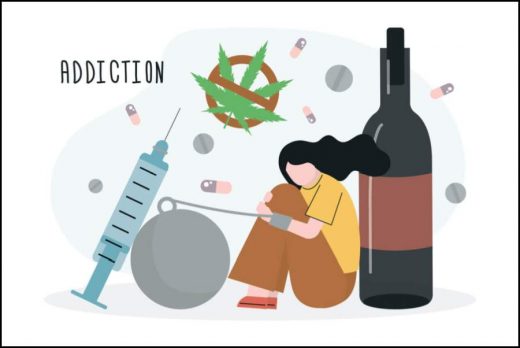Substance addiction is a chronic, that is, a brain disease that can recur. Even though the person is aware of the harm he suffers, he continues to use the substance in an unavoidable way. It is a brain disease because these substances used change both the structure and functioning of the brain.
These changes can be long-lasting; If substance use is started at an early age, during adolescence, when brain development continues, it may be permanent. We have already heard that it causes change, harms, and damages. In this article, I will try to explain at least one aspect of how the change occurs.
First, let’s look at what normal functioning is like in our brain. Think about the things you enjoy in your life. Eating a meal you love, sipping your coffee with your favorite dessert, watching a beautiful view, walking hand in hand with the person you love, chatting with friends, watching a movie, engaging in your hobby… The list goes on.
Although these vary from person to person, they are activities that are good for us, keep our life energy and motivation about life alive, and are activities that we are motivated to repeat because they are good for us and give us pleasure. Our brain directs us to repeat pleasurable behaviors. Here, pleasure is the reward. Rewarded behaviors are more likely to be repeated.
When you do something funny to your child, he/she jumps up and says “do it again, do it again”; Those difficult moments after eating a slice of dessert, when you have to decide whether to eat another slice or not… In all these processes, there is a pleasant activity and our brain secretes dopamine.
As long as dopamine circulation continues between brain cells, we experience pleasure. Since our brain knows that we do not need to live in this state forever, it pauses the release of dopamine in order to reach a state of balance by saying “Dude, you have reached your satisfaction, leave it for a while”, it takes back the excess dopamine released between the cells and the person returns to his normal and balanced state.
What happens in our brain when we use substances?
Although it varies depending on the substance used, the molecules of that substance can act like dopamine in our brain, causing excessive dopamine secretion, and also function to prevent the reabsorption of excess dopamine between brain cells. In other words, the substance a person takes exposes the brain to a dopamine bombardment, causing a feeling of extreme joy and relaxation.
However, over time, this situation causes our brain to say, “Man, this is too much dopamine,” and make some changes to put itself in a state of balance. It does this by reducing the cell receptors (cell channels that accept dopamine) that dopamine must reach. At the same time, our brain refuses to release dopamine outside of substance use.
All these changes make us unable to enjoy even the things we used to enjoy. After this stage, the person using the substance has to continue using the substance by increasing the dose, not to feel extreme joy, but to feel like a normal person, at least to feel something a little bit. This is the explanation why people who are addicted to substances are in an intense depressive state. The best way to prevent all this from happening is to never use the substance or try it even once.
Visits: 28



